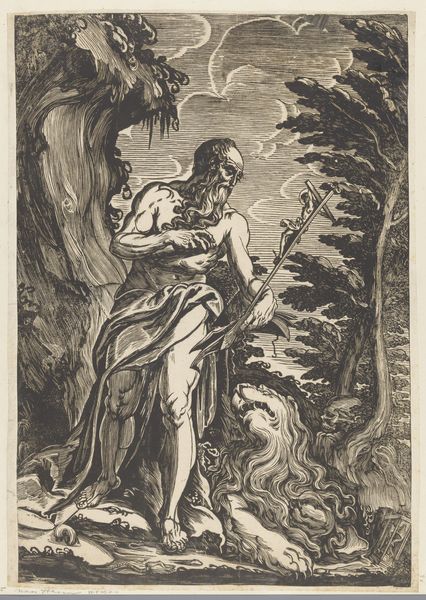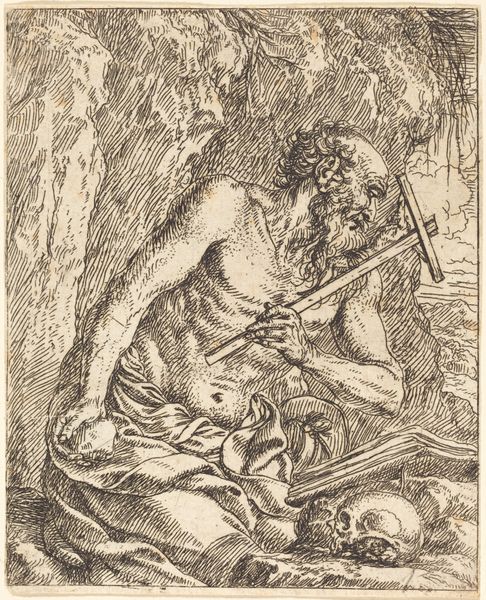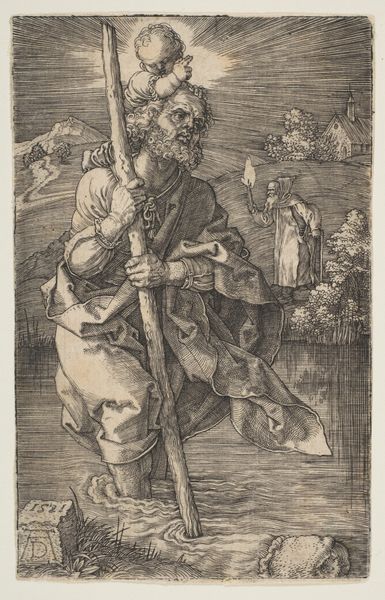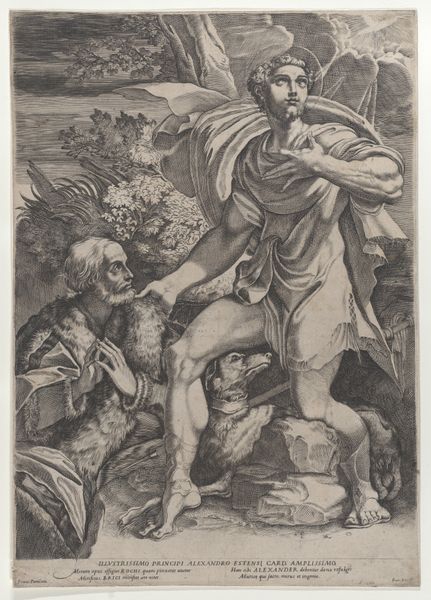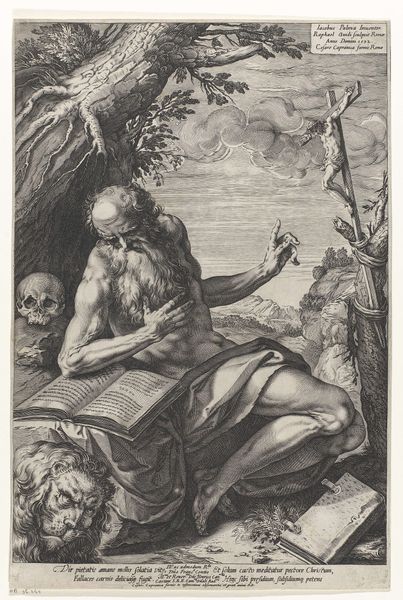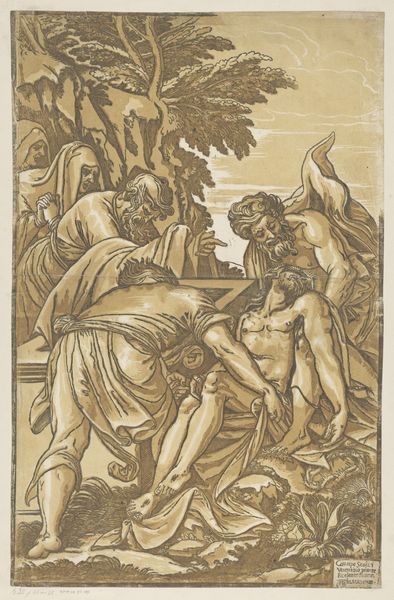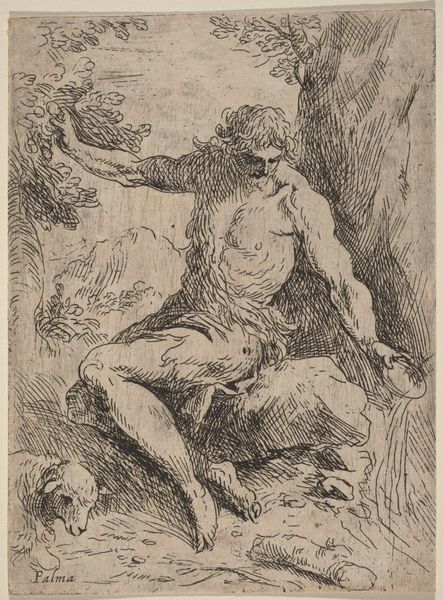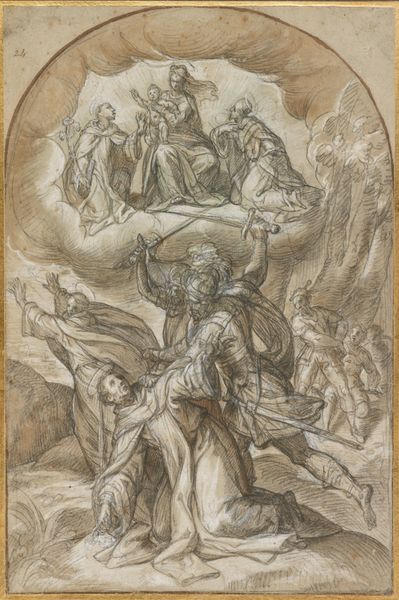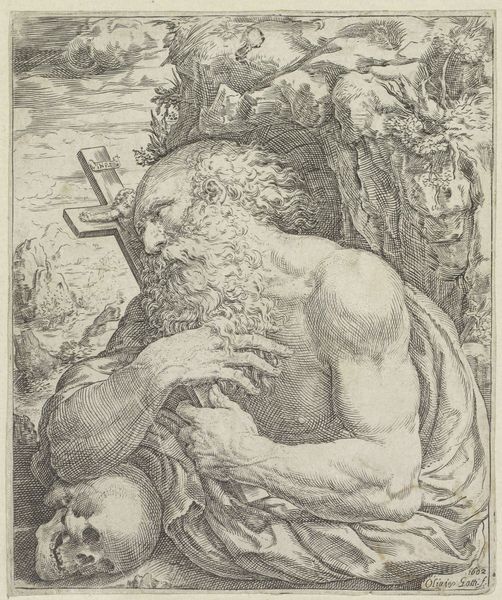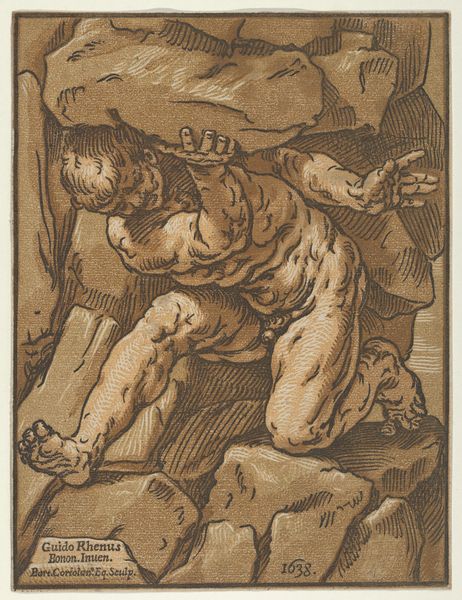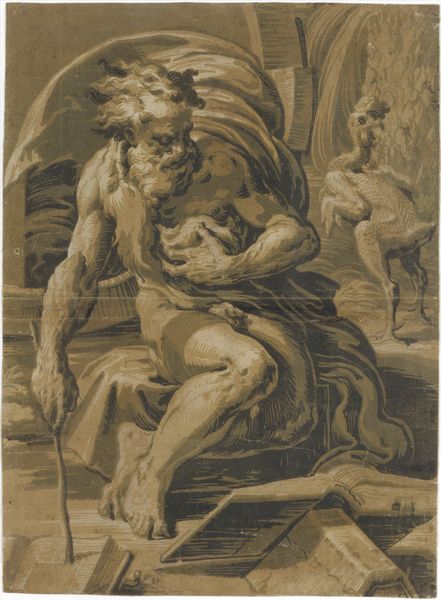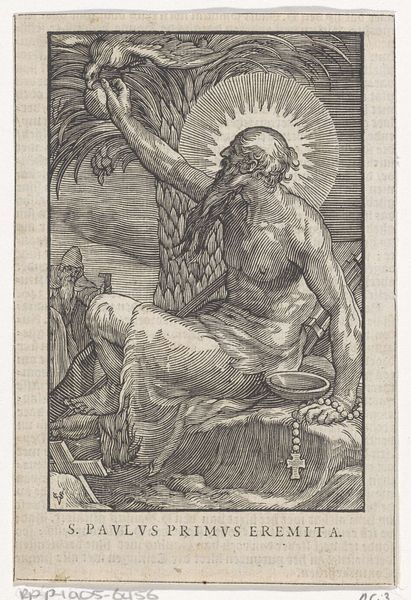
drawing, print, paper, engraving
#
drawing
#
baroque
# print
#
figuration
#
paper
#
history-painting
#
engraving
Dimensions: 294 × 220 mm (image); 314 × 240 mm (sheet)
Copyright: Public Domain
Curator: Here we have Bartolomeo Coriolano's "Saint Jerome," dating from 1637, a Baroque print currently residing at The Art Institute of Chicago. Editor: It strikes me immediately as a study in contrasts – the sinuous, almost fluid rendering of Jerome’s flesh against the sharp, angular lines of the rocks around him. Curator: The choice of the printmaking medium itself speaks to something. Consider the implications of reproduction in 17th-century Bologna. Images, particularly those of religious figures like Jerome, became accessible to a wider audience. It moves art outside of the sphere of simply the wealthy elite, doesn't it? Editor: Indeed, but let's not overlook how Coriolano utilizes line and tone. Look at the saint’s aged body – the almost agonizing detail he gives to the rendering of skin and muscle. Note how the light falls and defines every crevice, shadow, and plane. Curator: Absolutely. And considering Coriolano's innovative use of chiaroscuro woodcut techniques, manipulating multiple blocks to create tone, it wasn’t simply reproduction; he was innovating printing as craft. These prints functioned in an art market; the question becomes, for whom, and under what economic structures? Editor: A vital consideration, for sure. Yet I find myself returning to the figure, how Jerome's palpable presence conveys profound introspection. His hand is pressed to his chest, perhaps in sorrow or prayer. The scene, even without knowledge of the biblical narrative, projects the feeling of devotion and somber contemplation. The halo indicates sanctity, of course, but the rawness in the image lends a universal dimension. Curator: And look how the cross is so deliberately positioned; how laboriously such an item was rendered; consider the economy of devotional objects. Editor: Fascinating to consider those broader economic implications in that light. It enriches our experience and asks us to think beyond immediate aesthetic reactions. Curator: Exactly. Art, ultimately, never exists in a vacuum. Looking closely at production allows us to appreciate artistic choices through a completely new lens. Editor: Well, considering this work only from my aesthetic view was insufficient in examining all the contributing contexts surrounding this powerful piece.
Comments
No comments
Be the first to comment and join the conversation on the ultimate creative platform.
